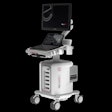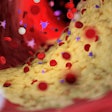Dear AuntMinnie Member,
This week we're pleased to present a new series of articles on important moments in radiology history, authored by imaging historian Otha Linton.
The series begins with a snapshot of the period immediately after Wilhelm Conrad Roentgen discovered "a new kind of rays" in his lab in Wuerzburg, Germany. News of the discovery spread rapidly around the world, and soon scientists and physicians were experimenting with the new technology.
The medical applications of x-rays were readily apparent, but less well recognized were the potential hazards of radiation. One early user of x-rays reported requiring more than an hour to acquire a single hand image, and also reported his experiences using an early fluoroscope to image a fetus in utero.
Learn more about this fascinating time in radiology's history by clicking here, or visit our Digital X-Ray Community at xray.auntminnie.com.
New guidelines on cardiac dose
More than 100 years after the discovery of x-rays, we're still trying to get a handle on radiation dose. Today, a coalition of medical organizations released a comprehensive report on cardiac radiation dose, with the goal of helping facilities that perform cardiac imaging do so with higher quality and at lower dose.
The report encapsulates much of the current thinking on controlling radiation dose, such as the need for optimized scanning protocols, operator training, and dose reporting. It also addresses the uncertainty regarding radiation risk estimates based on the linear no-threshold theory, which asserts that there's no safe level of radiation exposure, and calls for more basic research as a requisite to truly understanding risk.
Perhaps the most remarkable thing about the report, besides its thoroughness, is the consensus it represents between disparate organizations that frequently feud over turf when it comes to imaging utilization. Learn more by clicking here, or visit our CT Digital Community at ct.auntminnie.com.
DBT and screening
Finally, a new article in the April issue of Radiology addresses radiation dose in digital breast tomosynthesis (DBT), a new technology that's showing promise for breast imaging.
Tomosynthesis units acquire images in multiple projections that can then be fused to create a 3D volume. The technology can help radiologists see around structures that might obstruct pathology on a conventional 2D image. But the additional images also require more radiation exposure, which is a major issue for any screening technology.
In the new study, researchers compared radiation dose delivered to phantoms by a commercially available DBT system operating in both 2D and 3D modes. They found that the DBT system in 3D mode produced the lowest dose -- almost as low as in 2D -- for breasts of about average thickness. But as breast thickness increased, so did the difference in dose.
Still, the authors are optimistic that overall DBT dose can be reduced, both through new 3D imaging modes and by reducing the recall rate. Find out more by clicking here, or visit our Women's Imaging Digital Community at women.auntminnie.com.



















